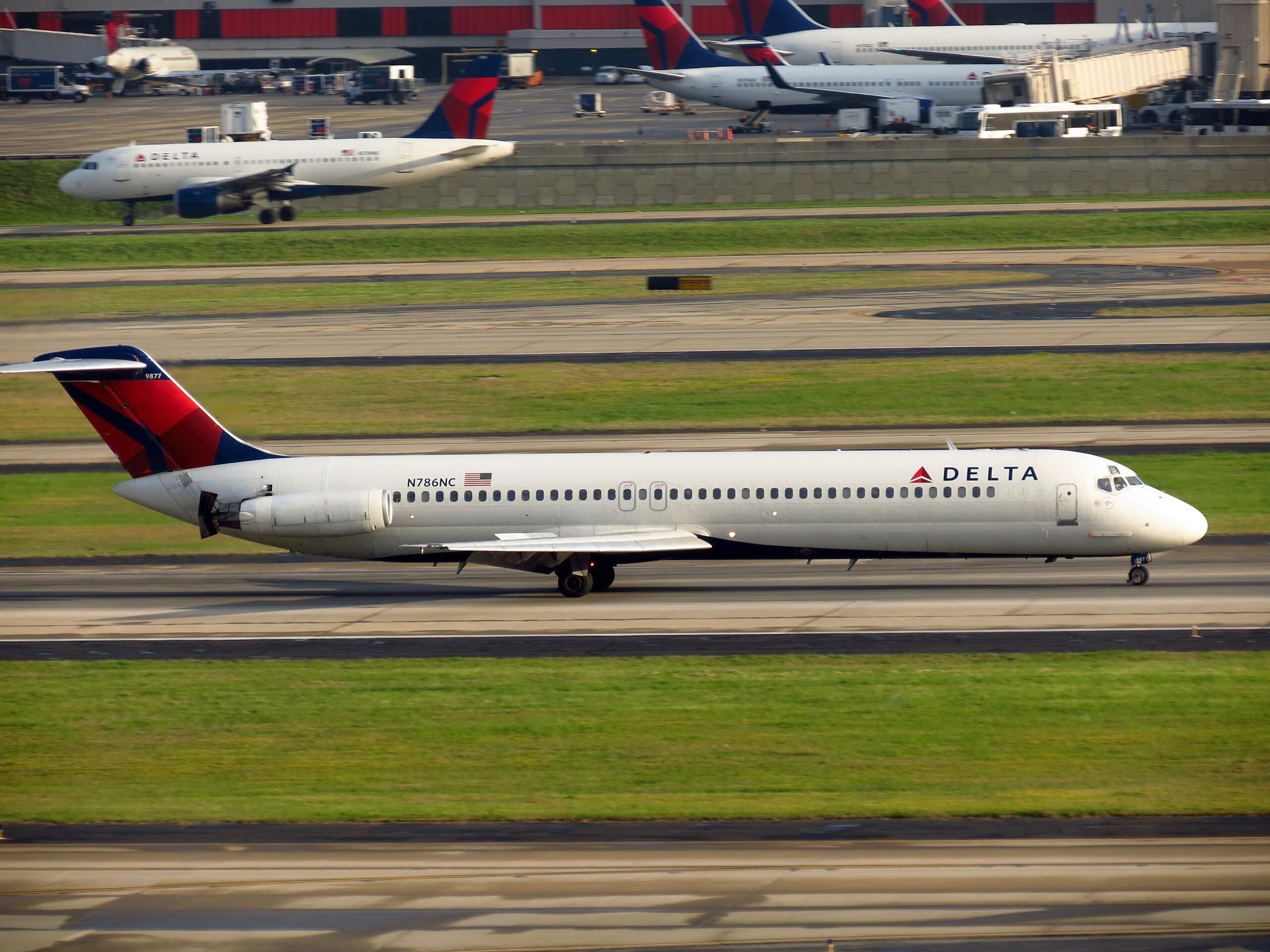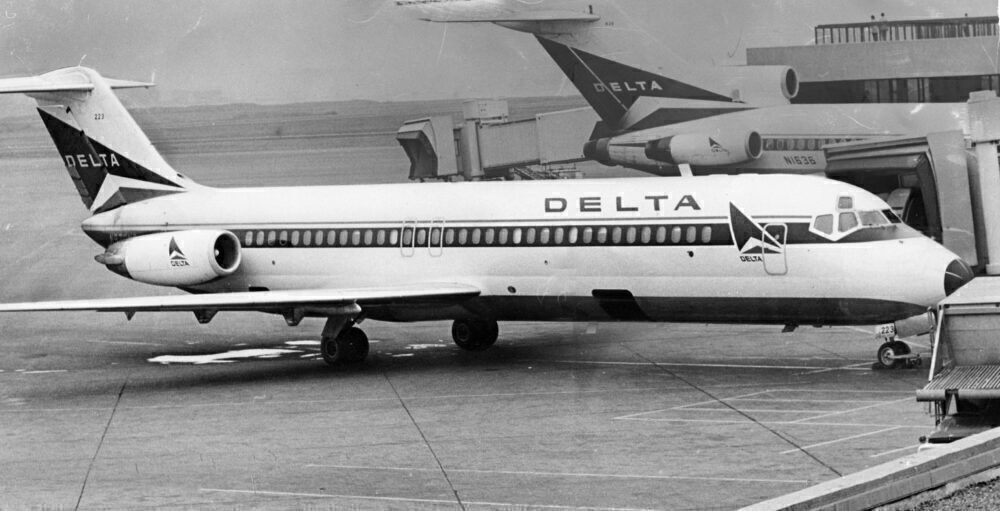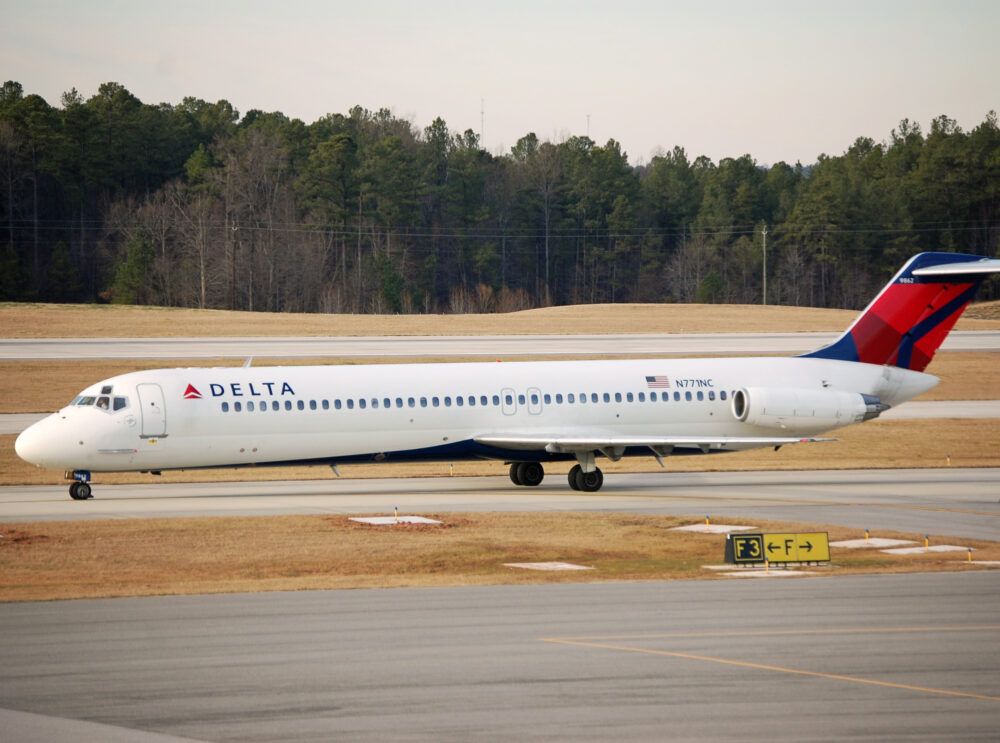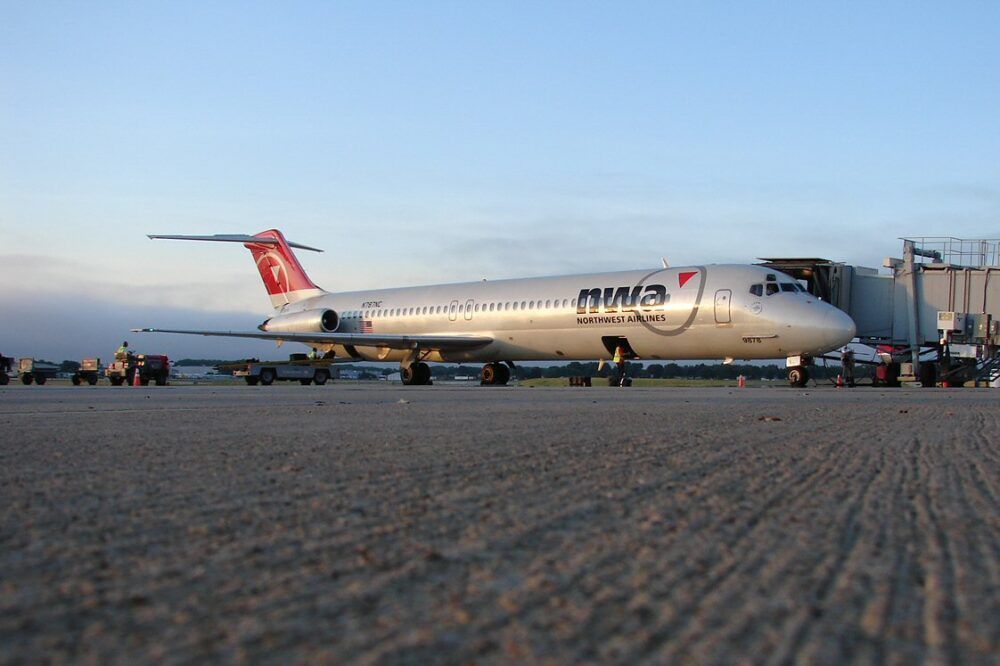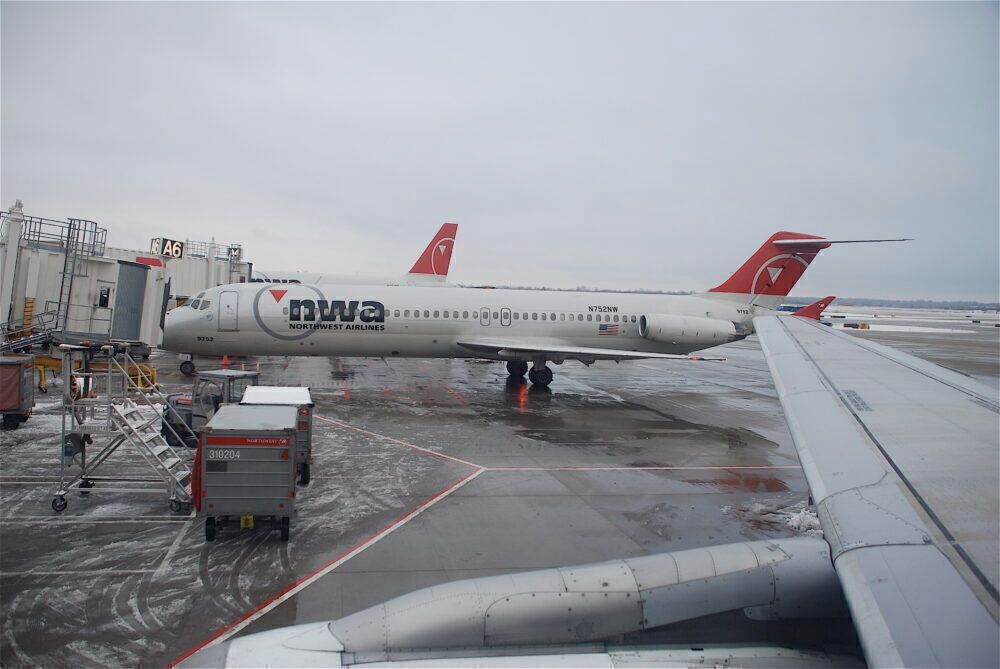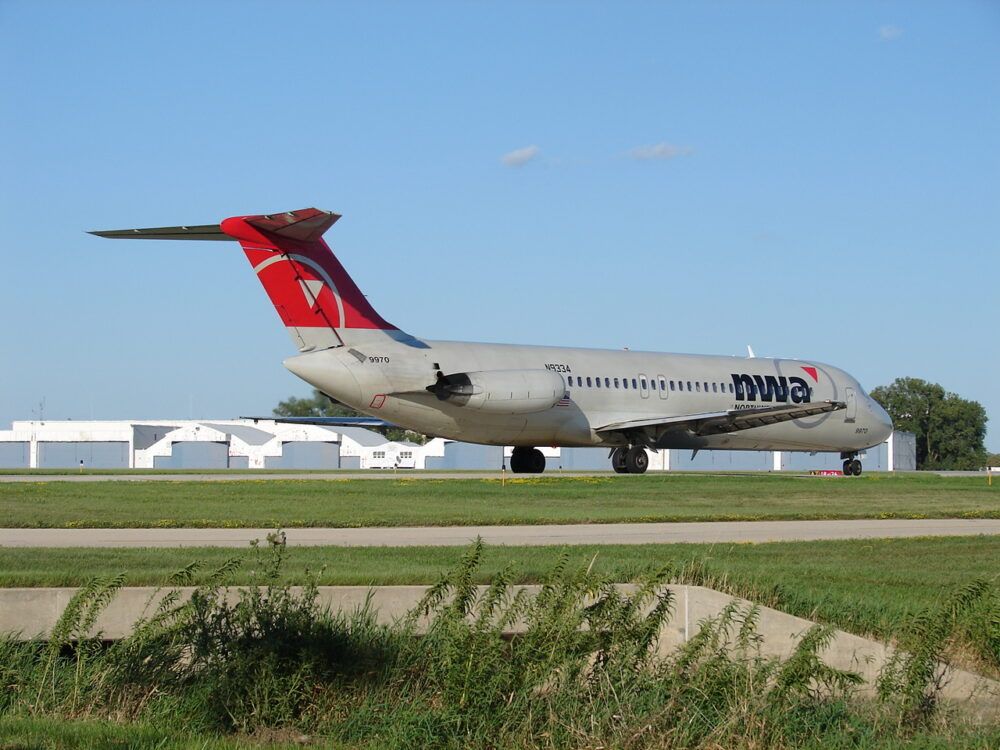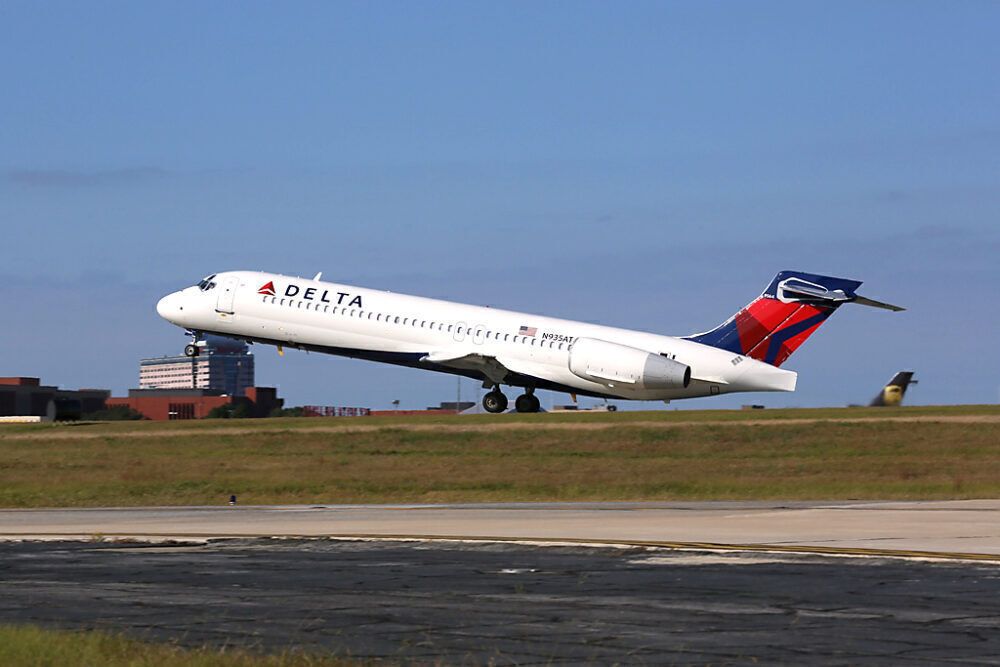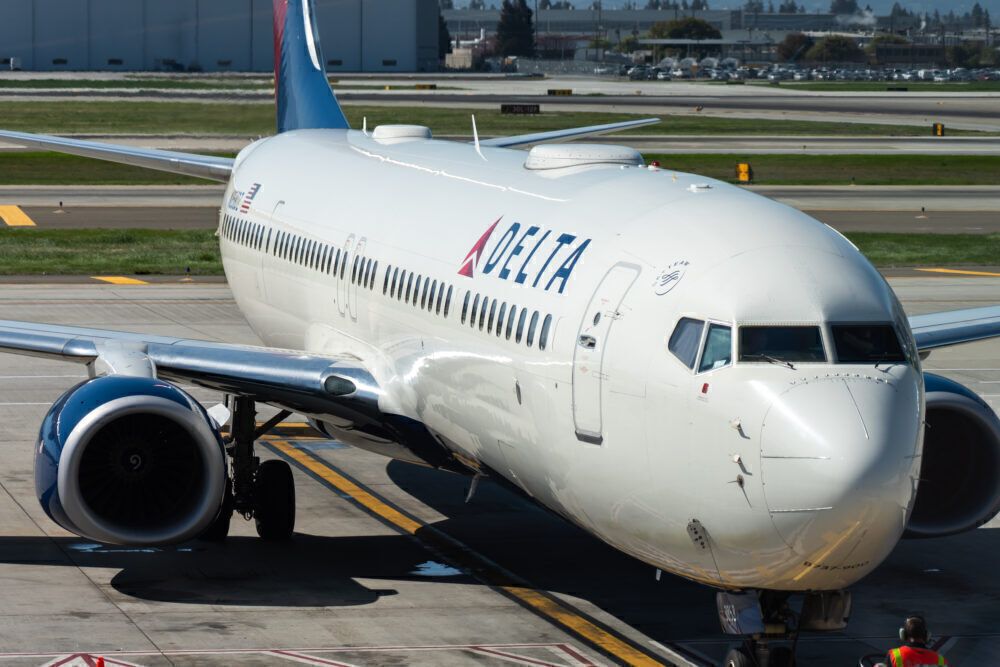The McDonnell Douglas DC-9 made its first flights in the 1960s. Back then, the aircraft was known as the Douglas DC-9, as Douglas and McDonnell did not merge until a few years after introducing DC-9. However, it was not until 2014 when the last US carrier, Delta Air Lines, finally retired the type from service.
Delta flew several versions of the DC-9 over its long history, but towards the end, the type's retirement symbolized the industry's transition away from the old and venerable to new and uncharted territory.
Delta's DC-9 history
Delta Air Lines first acquired the DC-9 in 1965. The airline had already been flying jet services with the Douglas DC-8 and Convair 880. However, those aircraft were mainly used to run longer-haul flights. For short-haul flights of around 500 miles or less, the industry relied on propeller aircraft.
With jets cementing their place as the future of air travel, the Douglas Aircraft Company decided to make a small regional jet to service these short-haul routes. The DC-9 made its first commercial flights in 1965.
Delta started flying DC-9-15s and DC-9-14s. The next DC-9 variant to enter the fleet was the DC-9-32, which carried more passengers than the existing DC-9s in Delta's fleet.
The DC-9-32s spent several decades flying with Delta, and the airline loved the jets. In 1971, Delta flew 63 DC-9-32s – a sizable number of jets. However, in the early 1990s, times had changed, and Delta needed a new jet to run short-haul routes. It turned to the Boeing 727, and the DC-9-32s were retired by January 1st, 1993.
The DC-9s come back
In 2008, the DC-9s reentered Delta's fleet. Atlanta-based Delta Air Lines had merged with Minneapolis-based Northwest Airlines, creating a massive airline. At the time, Northwest Airlines was still flying DC-9 aircraft.
Northwest brought 97 DC-9s back to Delta's fleet. And, for the first time in Delta's history, the airline flew the larger DC-9-40s and DC-9-50s. Two DC-9-30s that re-entered Delta's fleet following the merger were actually former Delta planes.
Delta decided to retire the DC-9-30s and DC-9-40s by 2011. Those planes never received an official repainting into the new Delta livery. However, the larger DC-9-50s remained and were repainted into Delta's livery.
Why did Northwest Airlines fly the DC-9 for so long?
Northwest Airlines had an old fleet heading into the merger. While it did have some newer aircraft like the Airbus A330s and Boeing 757-300s, it also flew some of the oldest jets in the sky with a fleet of 67 McDonnell Douglas DC-9s, per its last annual filing before the merger.
These jets had an average age of 35 years. Some of Northwest's jets were over 40 years heading into the merger. These old aircraft, however, played an important role in Northwest Airline's operations.
In the mid-1990s, when Delta was retiring its DC-9s, Northwest Airlines decided to go the opposite direction. Instead of retiring its DC-9s and placing an order for new aircraft, it decided to invest in the DC-9s.
A Wall Street Journal article from 1998 discusses Northwest's decision. Richard Anderson, then executive vice president of technical and flight operations, stated that it was "the singular best investment we've ever made," from a financial perspective.
Northwest Airlines had just come out of a financial crisis. After surviving heavy losses and avoiding a bankruptcy filing, the airline did not have a lot of cash to spend, and it was cheaper to keep flying the DC-9s.
Northwest had planned to fly the DC-9s until they turned 40 years old. This was an impressive time span and well beyond the normal life of jet aircraft. To support the flying, Northwest had to pay more in maintenance, expand its technician headcount, and add new maintenance lines for the planes.
The decision paid off for Northwest
A 2005 article in the Los Angeles Times discusses how the move paid off for Northwest. The airline could weather high fuel prices and manage fighting against the competition without being burdened by a heavy order book.
However, Northwest did have to start retiring some DC-9s that started to hit their maximum pressurization cycles. However, the benefit for Northwest was that when the airline needed to park planes, owning the old DC-9s was much cheaper and much easier to stomach than the payments for a new jet.
Stay informed: Sign up for our daily and weekly aviation news digests
Delta needed to get rid of the DC-9s
Airline mergers are often messy and lead to a few years of inefficiencies in the first few years. The Delta/Northwest merger was no different from a fleet perspective. The smaller DC-9s were the first to exit the fleet.
Delta decided to keep the larger DC-9s, which received a paint job into the new fleet colors. However, those jets also needed to go. The DC-9-50s were mostly in the mid-30s in age, and Delta was in a much better financial position to replace the jets than when Northwest decided to keep the planes in its fleet.
Delta went around looking for aircraft at the time. Considering all of its options, the airline found a great deal in 2012. Southwest Airlines had just merged with AirTran Airways. AirTran flew both Boeing 737 and Boeing 717 aircraft. Southwest had only Boeing 737s in its fleet and wanted to stay that way.
Southwest needed to find a new home for the Boeing 717s, and Delta needed a 110-seat jet. So, Southwest and Delta reached an agreement for Delta to take 88 Boeing 717s from Southwest.
Combined with deliveries for new Boeing 737-900ERs and used MD-90 additions, Delta decided its time was up to fly the DC-9s. The final DC-9-50 flew in 2014. Delta was the last US airline to fly the DC-9s, and it marked the end of the type's venerable role in American aviation.
With the retirement of the DC-9s, a new era of a post-merger landscape in the US dawned. Airlines had grown larger than they had ever been and flew to more destinations than they ever had before. The DC-9, which spent a venerable amount of time flying in the US, was part of an older era of flying.
Newer, quieter, and more fuel-efficient jets pushed the industry into an entirely new direction. Now, airlines are focused on minimizing their environmental footprints, reducing fuel expenses, and are not shy about placing new aircraft orders.
Did you ever fly on a Northwest or Delta DC-9? Do you miss the DC-9? Let us know in the comments!

